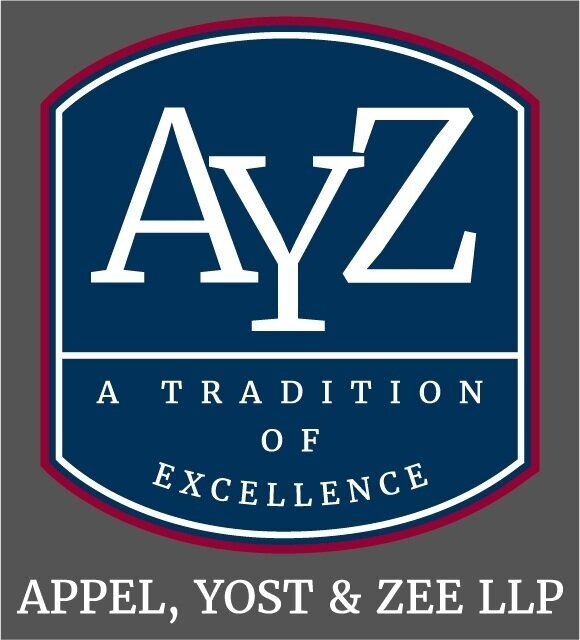Tax Changes under the Tax Cuts and Jobs Act of 2017
Changes to Individual Taxation
On December 22, 2017, President Trump signed the Tax Cuts and Jobs Act into law (the “Act”). The Act changed multiple aspects of our tax code and it would be impossible to cover all areas of the changes in one posting. My colleague, Eric Schelin Rothermel, will address the changes in taxation that affect alimony in a later posting. This post will quickly summarize the changes to individual taxation (not including the treatment of alimony under the Act).
Bracket Changes:
The Act keeps seven income tax brackets, but lowers the tax rates in each bracket until 2026. In 2026 the rates will revert to the 2017 rates. This will result in a tax hike in eight years unless the Act is later amended. The income levels listed in the brackets below will adjust each year with inflation. The adjustment will be smaller than in prior years because the Act uses an index called the chained consumer price index. Over time the use of the chained consumer price index will result in more people moving into higher tax brackets.
Deductions:
The Act doubles the standard deduction. For Single Filers the deduction increases to $12,000.00 in 2018 up from $6,350.00 in 2017. For those filing Married Filing Jointly, the deduction increases from $12,000.00 to $24,000.00. The standard deduction will revert to 2017 levels in 2026. The Act also eliminates personal exemptions. For families with many children, the loss of personal exemptions may result in higher taxes. The standard deduction for Head of House is raised to $18,000.00 up from $9,350.00. The standard deduction for Married filing separately has increased to $12,000.00, up from $6,300.00. The Act eliminates the vast majority of itemized deductions. The moving deduction has been eliminated (but kept if you are a member of the military). Deduction of mortgage interest is limited to the first $750,000.00 of the mortgage debt incurred to buy a residence. Interest on home equity lines of credit is permitted to be deducted only for remodeling your home. If used for any other purposes, the interest on home equity lines of credit is no longer permitted to be deducted. Deductions for state and local taxes is limited to $10,000.00 and the taxpayer must choose between property taxes or income/sales tax. This will obviously affect taxpayers in states with higher state, local, and real estate taxes such as California and New York. The Act keeps the deductions for charitable contributions, retirement savings, and student loan interest. The deduction for medical expenses was expanded and permits taxpayers to deduct medical expenses that are 7.5% or more of AGI. Prior to the bill, the deduction was only permitted at 10% or more of AGI except for Seniors who were permitted the 7.5% deduction. (The 10% deduction limit was only in effect for a few years. Prior to 2013, 7.5% was the allowed deduction). Employees can continue to use pretax dollars for parking and transit passes limited to $260.00 a month; however, employers who pay for this expense for their employees can no longer deduct the expense. Bicycle commuters lost the $20.00 per month, tax-free reimbursement for their commuting expenses.
Affordable Care Act:
The Act removes the Affordable Care penalty for those without health insurance starting in 2019. The 3.8% Net Investment Income Tax (the “NIIT”) remains in effect.
AMT – Alternative Minimum Tax:
The Act keeps the AMT, but increases the exemption from 2017 levels of $54,300.00 for taxpayers filing as singles to $70,300.00, and from $84,500.00 for taxpayers using married filing jointly to $109,400.00. The exemptions phase out at $500,000.00 for single taxpayers and $1,000,000.00 for persons using married filing jointly. Once again the exemption increases revert to 2017 levels in 2026. Child and Elder Care: The Act increases the Child Tax Credit for families to $2,000.00 (up from $1,000.00). Taxpayers who don’t earn enough to pay taxes can claim the credit up to $1,400.00. The exemption phase-out for married filers was increased from $110,000.00 to $400,000.00. The Act also expands the use of 529 savings plans. 529 savings plans can now be used for tuition at private and parochial K-12 schools. The funds can even be used for some expenses for home schooled students. However, there is a limit to the use of 529 savings plans; only $10,000.00 per student, per year, can be withdrawn tax-free to help pay tuition for private and parochial K-12. The Act now permits a $500.00 credit for each non-child dependent. This credit is intended to be used by families caring for elderly parents.
